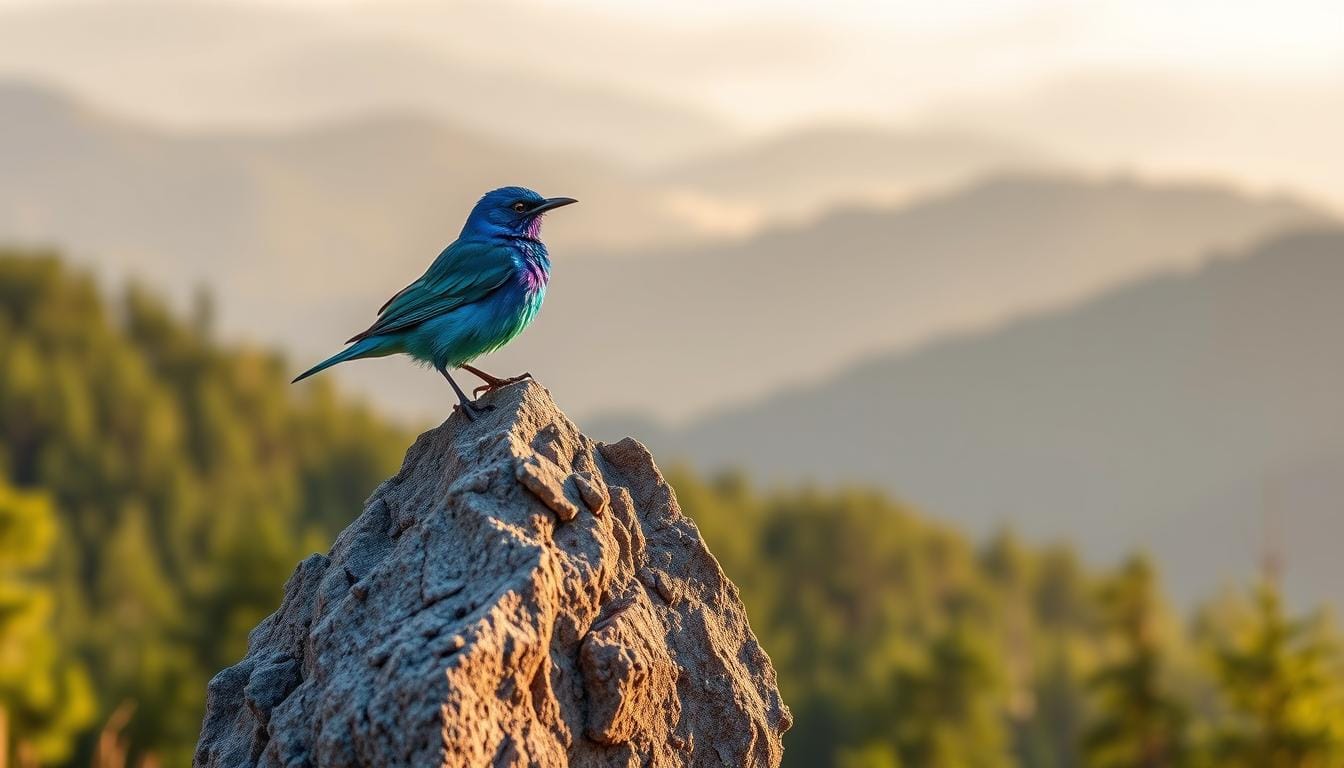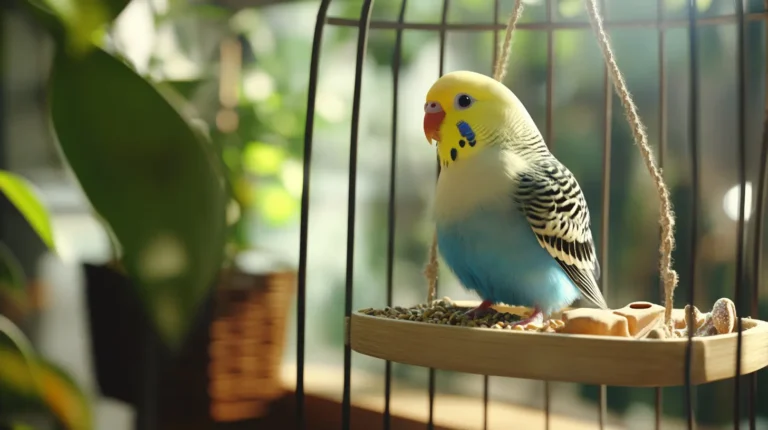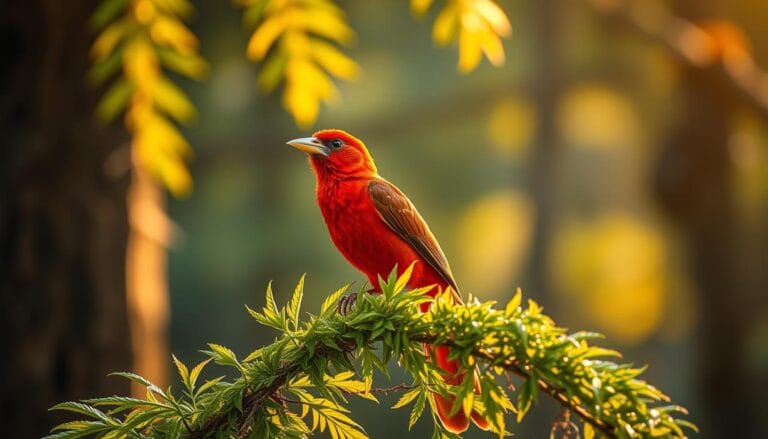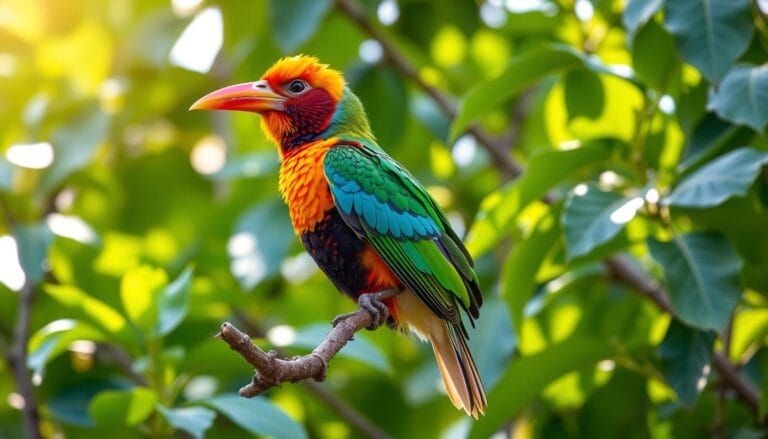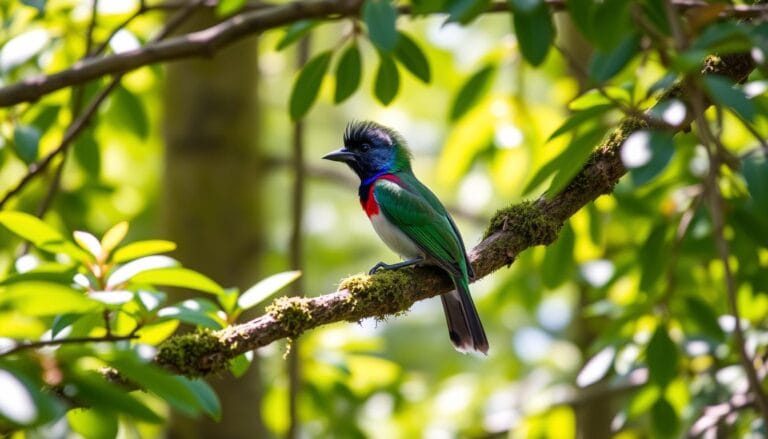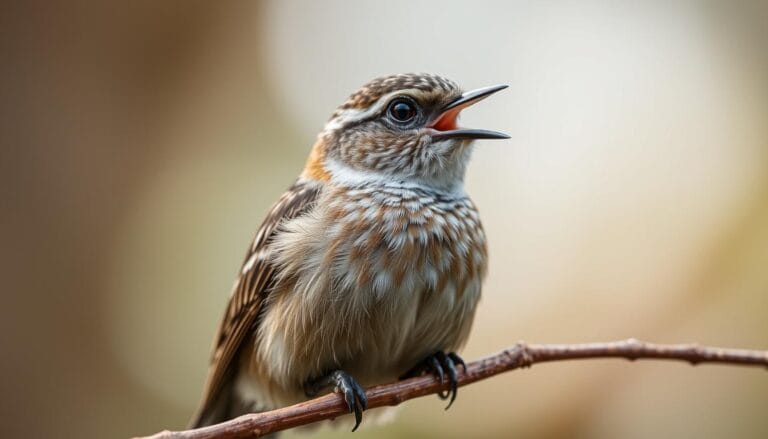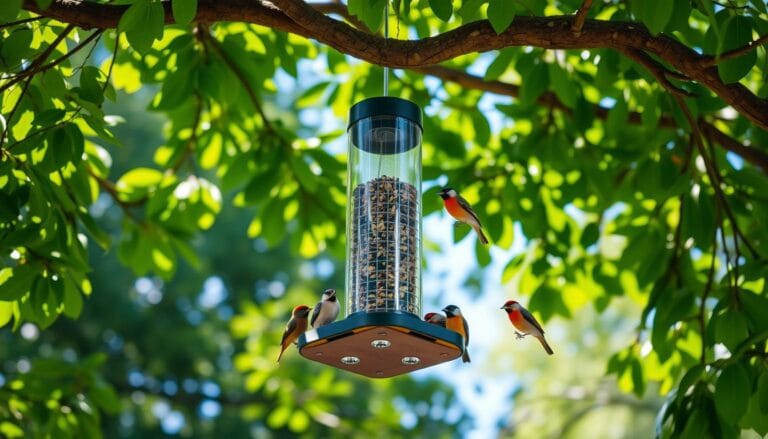Blue Rock Thrush Bird: Why Is Oregon’s Rare Visitor Special?
Imagine being in Oregon on April 21, seeing a rare bird that has never been seen in the U.S. before. The blue rock thrush bird, from Southeast Asia, has arrived in Oregon. This has excited many bird lovers.
Table of Contents
The blue rock thrush bird is very rare in Oregon. Its sighting is a big deal. As you learn about bird watching, you might wonder why this bird is so special in Oregon. We will explore the blue rock thrush bird and its importance in Oregon.
Introduction to the Blue Rock Thrush Bird
The first time the blue rock thrush was seen in the U.S. was in Oregon on April 21, 2023. This event is historic for bird watchers. With the peak migration season happening, people are curious about its migration and habits.
Key Takeaways
- The blue rock thrush bird is a rare visitor to Oregon, with its sighting marking a significant rarity.
- The first recorded sighting of the blue rock thrush in the U.S. occurred in Oregon on April 21, 2023.
- The blue rock thrush bird is native to Southeast Asia, specific to the philippensis subspecies.
- The sighting in Oregon has generated excitement among bird enthusiasts and sparked interest in the birding community.
- The blue rock thrush bird is considered potentially the rarest bird sighting ever recorded in Oregon.
- The likelihood of the two sightings being the same bird or different birds is considered to be about equally likely by the American Birding Association (ABA).
Introducing the Mysterious Blue Rock Thrush Bird
The blue rock thrush bird is a fascinating species that has captivated bird enthusiasts for centuries. It has unique characteristics and habits. This bird is a must-see for anyone interested in bird watching.
It breeds in southern Europe, northwest Africa, and from Central Asia to northern China and Malaysia. This makes it a widely distributed species.
Exploring the blue rock thrush bird reveals its intriguing historical background and significance in bird-watching. Seeing a blue rock thrush in Oregon is rare. It’s a highly sought-after experience for bird enthusiasts.
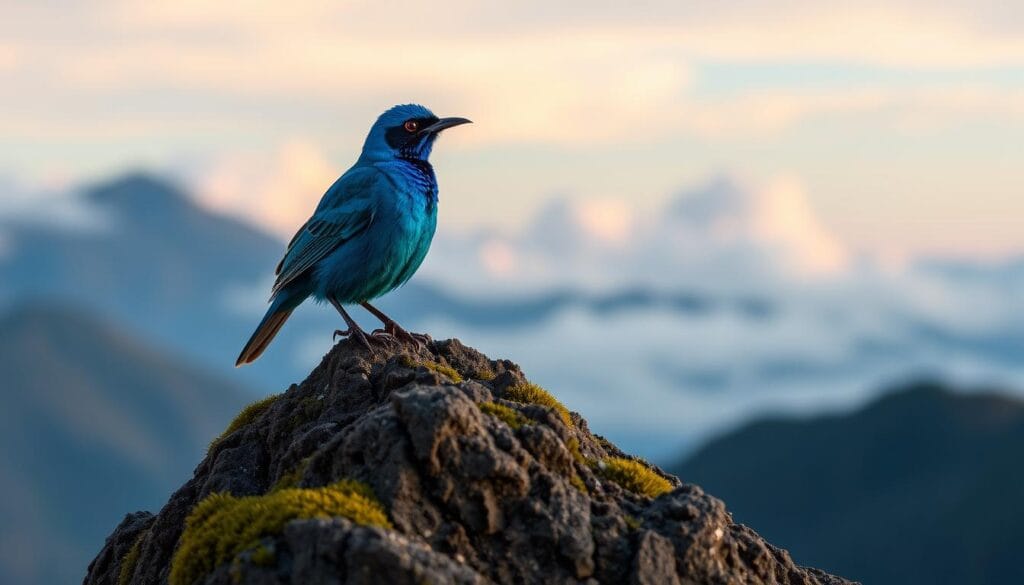
Some interesting facts about the blue rock thrush bird include: * It can adapt to different environments, from rocky terrain to concrete buildings. * Its unique song is a series of melodic phrases. * It has migratory patterns that take it to different parts of the world in search of food and shelter.
The blue rock thrush bird is a true marvel of nature. Its sighting in Oregon is a rare treat for bird enthusiasts. With its striking blue plumage and distinctive song, this bird is a must-see for anyone interested in bird watching.
Physical Characteristics of the Blue Rock Thrush
The blue rock thrush bird is about the size of a starling, measuring 21–23 cm long. It has a long, slim bill. You can spot this bird by its blue-grey feathers and darker wings.
The male blue thrush bird stands out with its bright blue color and reddish-brown belly. The female has a more subtle color but keeps the species’ unique features.
Some key characteristics of the blue rock thrush bird include:
- Blue-grey plumage with darker wings
- Long slim bill
- Bright blue coloration with reddish-brown belly in males
- Subdued coloration in females
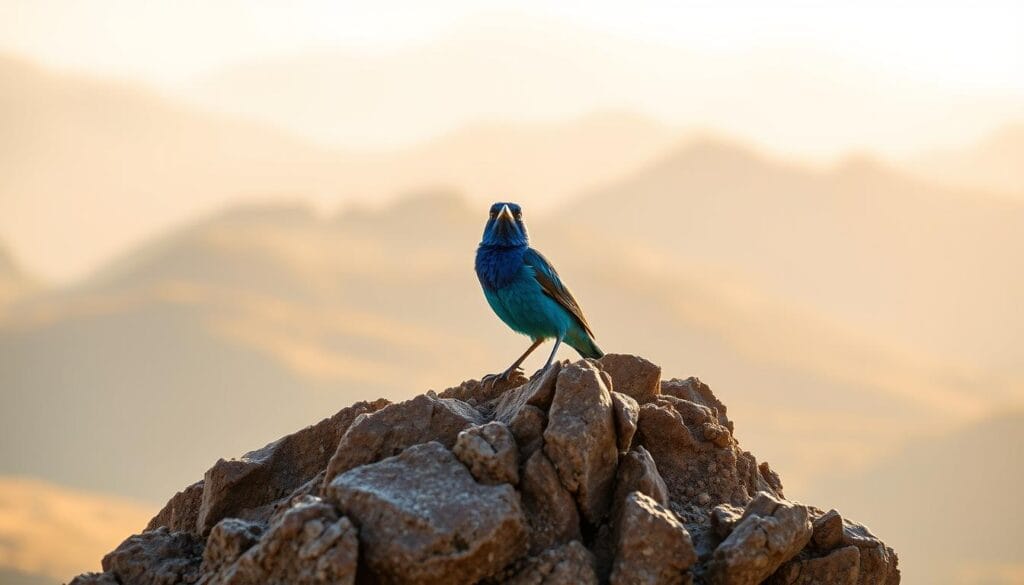
The blue thrush bird’s looks make it a standout species. Its unique feathers and colors attract many bird lovers. Whether you’re new to birdwatching or experienced, the blue rock thrush is a bird worth learning about.
Natural Habitat and Preferred Environment
The blue rock thrush bird in Oregon is rare but fascinating. It lives in various places, from Europe’s mountains to Asia’s forests. It loves rocky cliffs and outcrops for nesting, using its strong bill to dig burrows.
This bird is found in southern Europe, northwest Africa, and parts of Asia. It moves around to find food and places to breed. Seeing a blue rock thrush in Oregon is a big deal for birdwatchers.
Here are some interesting facts about the blue rock thrush bird’s home and habits:
- It can live in different places, from mountains to forests.
- Its strong bill helps it dig burrows for nesting.
- It travels to find food and places to breed.
The Unexpected Oregon Visitor: A Rare Sighting
Have you heard about the blue rock thrush oregon sighting? It’s been a big deal in the birding world. An amateur photographer caught amazing pictures of this rare bird. This sighting shows how vital it is to protect this species and its home.
The blue rock thrush has never been photographed in the United States before. This makes the sighting very special for bird lovers. It’s only the second time this bird has been seen in oregon. But the American Birding Association didn’t accept the first sighting. If confirmed, this would be the first time a blue rock-thrush has been seen in North America.
Some important facts about this rare sighting include:
- The blue rock thrush breeds in Europe and Asia. It rarely goes north, not even to Alaska.
- The bird might have ended up in oregon because of a storm. This storm could have changed its usual path.
- This sighting is the rarest bird ever seen in oregon.
The discovery of the blue rock thrush in oregon is a big reminder. It shows how important it is to keep natural habitats safe. As you keep exploring birdwatching, you might see this rare bird in oregon. This would make your experience even more special and unforgettable.
Behavioral Patterns and Daily Activities
The blue rock thrush bird has unique behaviors and daily activities. It eats insects, small reptiles, berries, and seeds. Watching it forage with its strong bill is fascinating.
This bird is often seen in small groups or pairs. Its mating rituals are complex, using displays and songs to attract a mate. Key aspects of its behavior include:
- Feeding habits: The blue rock thrush bird eats whatever it can find.
- Social behavior: It’s often found in small groups, showing interesting social behavior.
- Mating rituals: Its mating rituals are complex, involving displays and songs.
The blue rock thrush bird’s behavior is influenced by its environment and food availability. Studying its behavior helps us understand this fascinating species better.
Diet and Hunting Techniques
The blue rock thrush bird in Oregon eats a wide variety of foods. It munches on insects, small reptiles, berries, and seeds. Its diet is complex, showing how adaptable it is. Bird lovers and researchers find its eating habits very interesting.
The blue rock thrush’s hunting ways are quite fascinating. It uses its strong bill and quick body to catch food. Prey capture methods include diving from trees, hovering, and hunting in specific areas. It even chases birds in flight up to 300 m high.
Some of the blue rock thrush’s favorite foods are:
- Insects, such as grasshoppers and beetles
- Small reptiles, like lizards and snakes
- Berries and seeds from various plants
- Small mammals, like mice and voles, sometimes
Learning about the blue rock thrush’s diet and hunting is key. It helps us understand this rare Oregon bird better. By studying its habits, we get a closer look at its life.
Conservation Status and Population Trends
The blue rock thrush bird is listed as Least Concern on the IUCN Red List. But, its population is falling in some areas. It’s vital to know the threats and how we protect it. The blue thrush bird loses its home, faces climate change, and pollution.
Some key statistics on bird conservation include:
- Total number of bird taxa assessed: 491
- Number of taxa assessed as Threatened: 80
- Number of taxa predicted to be negatively impacted by climate change: 69
These numbers show why we must protect species like theblue rock thrush bird.
Efforts to save the blue rock thrush bird include conservation, protecting its home, and teaching people. Knowing about its status and trends helps us see why we need to keep working. This way, we can protect the blue rock thrush bird and its home.
The Blue Rock Thrush’s Cultural Significance
The blue rock thrush bird holds deep meaning in many cultures. It’s seen as a symbol of good luck and prosperity. As you learn more about this oregon rare bird, you’ll see its role in various societies. It’s also the national bird of Malta, showing its importance there.
In stories and art, the blue rock thrush bird is often featured. Its beauty and song are celebrated. For example, a story about the hermit thrush teaches kids about honesty. The blue rock thrush bird in oregon also draws birdwatchers, thanks to its rare sightings.
Here are some examples of the blue rock thrush bird’s cultural importance:
- Its role in Maltese culture as a national symbol
- Its mention in various literary and artistic works
- Its significance in the birding community, specially in Oregon
Exploring the blue rock thrush bird reveals its cultural depth. The oregon rare bird is loved by many for its beauty and song. It’s a favorite among bird lovers everywhere.
Similar Species and How to Identify Them
When trying to spot a blue rock thrush bird, knowing similar species is key. The blue thrush bird belongs to the Muscicapidae family. This family has many birds that look alike.
To tell the blue rock thrush bird apart, look at its blue-grey feathers and reddish-brown belly. Also, check where it lives. The blue thrush bird likes rocky places or cliffs.
Other birds to watch out for are the Olive-backed Thrush and the Russet-backed Thrush. They have their own looks, like:
- Olive-brown color with a buffy eyering
- Rustier color with thinner, paler eyerings
Knowing about these birds helps you spot the blue rock thrush bird more easily. You’ll get to see its special traits.
Impact on Oregon’s Birding Community
The blue rock thrush bird in oregon has sparked a lot of excitement. Many bird lovers are now visiting Oregon to see this oregon rare bird. This has brought a lot of tourists to the state from all around the world.
Studying the blue rock thrush bird offers a great chance for scientists. They can learn about its behavior, where it lives, and how many there are. The Bird Alliance of Oregon says seeing this bird in Oregon is a rare event, happening only once in decades.
The blue rock thrush bird’s visit to Oregon brings many benefits. These include:
- More money for local communities from tourism
- Chances for scientists to do research
- More people learning about why we need to protect birds
The blue rock thrush bird’s visit has a big impact on Oregon’s birding community. It’s a special chance for bird watchers and scientists to learn about this rare and interesting bird.
Photography and Observation Tips
Photographing the blue rock thrush bird requires patience and persistence. This bird lives in rocky areas or cliffs. Knowing its habitat and behavior is key to getting great photos.
To capture amazing images, you’ll need a good camera and lens. Also, be ready to spend a lot of time waiting for the perfect shot.
Here are some tips for photographing the blue rock thrush bird:
- Use a 400 mm f2.8 lens for high-quality images.
- Adjust ISO settings for low-light conditions.
- Be prepared to take many shots to get the perfect image.
Observing the blue rock thrush bird is also rewarding. It lets you study its behavior and habitat. By understanding its habits, you can spot and photograph it more easily.
Always respect the bird’s habitat and follow local guidelines for photography and observation. With the right gear and patience, you can take stunning photos of the blue rock thrush bird. Enjoying this experience will be rewarding.
Conclusion: The Future of Blue Rock Thrush Sightings in Oregon
The rare sighting of the blue rock thrush bird in Oregon has caught the eye of many. It shows the importance of protecting our natural world. This event reminds us of the need to keep our habitats safe for these special birds.
The blue rock thrush is a bird that can teach us a lot. By watching and protecting it, we learn important lessons. These lessons help us make better plans for the future of these birds in Oregon.
Seeing a blue rock thrush in Oregon is a special moment for anyone. It shows us the amazing variety of life on our planet. Let’s keep working to save their homes. This way, more people can enjoy seeing these birds in the future.
FAQ
What is the blue rock thrush bird?
The blue rock thrush bird is a rare visitor to Oregon. It catches the eye with its striking looks and interesting ways of acting.
Where is the blue rock thrush bird normally found?
This bird is from Europe, Africa, and Asia. It lives in southern Europe, northwest Africa, and parts of Central Asia, northern China, and Malaysia.
Why is the sighting of the blue rock thrush bird in Oregon significant?
Seeing the blue rock thrush in Oregon is a big deal. It gets bird lovers excited and shows how important it is to protect this bird and its home.
What are the physical characteristics of the blue rock thrush bird?
The blue rock thrush has a blue-grey coat, darker wings, and a long, slim bill. The male is very eye-catching, with bright blue and a reddish-brown belly.
What is the natural habitat and preferred environment of the blue rock thrush bird?
This bird lives in mountains in Europe and forests in Asia. It likes to nest in rocky places or cliffs.
What are the behavioral patterns and daily activities of the blue rock thrush?
The blue rock thrush eats insects, small reptiles, berries, and seeds. It likes to be with others, often in small groups or pairs.
What is the conservation status and population trends of the blue rock thrush?
The blue rock thrush is not considered endangered, but its numbers are going down. This is due to habitat loss, climate change, and pollution.
How can the blue rock thrush be identified?
To spot the blue rock thrush, look for its blue-grey feathers and reddish-brown belly. Also, watch its behavior and where it lives.
What is the impact of the blue rock thrush on Oregon’s birding community?
The blue rock thrush’s visit to Oregon excited bird watchers. It drew visitors from everywhere and offered chances for research and tourism.
What are the tips for photographing and observing the blue rock thrush?
To capture the blue rock thrush, know its habitat and behavior. Be patient and persistent, as it often hides in rocky spots or cliffs.
There are no reviews yet. Be the first one to write one.

